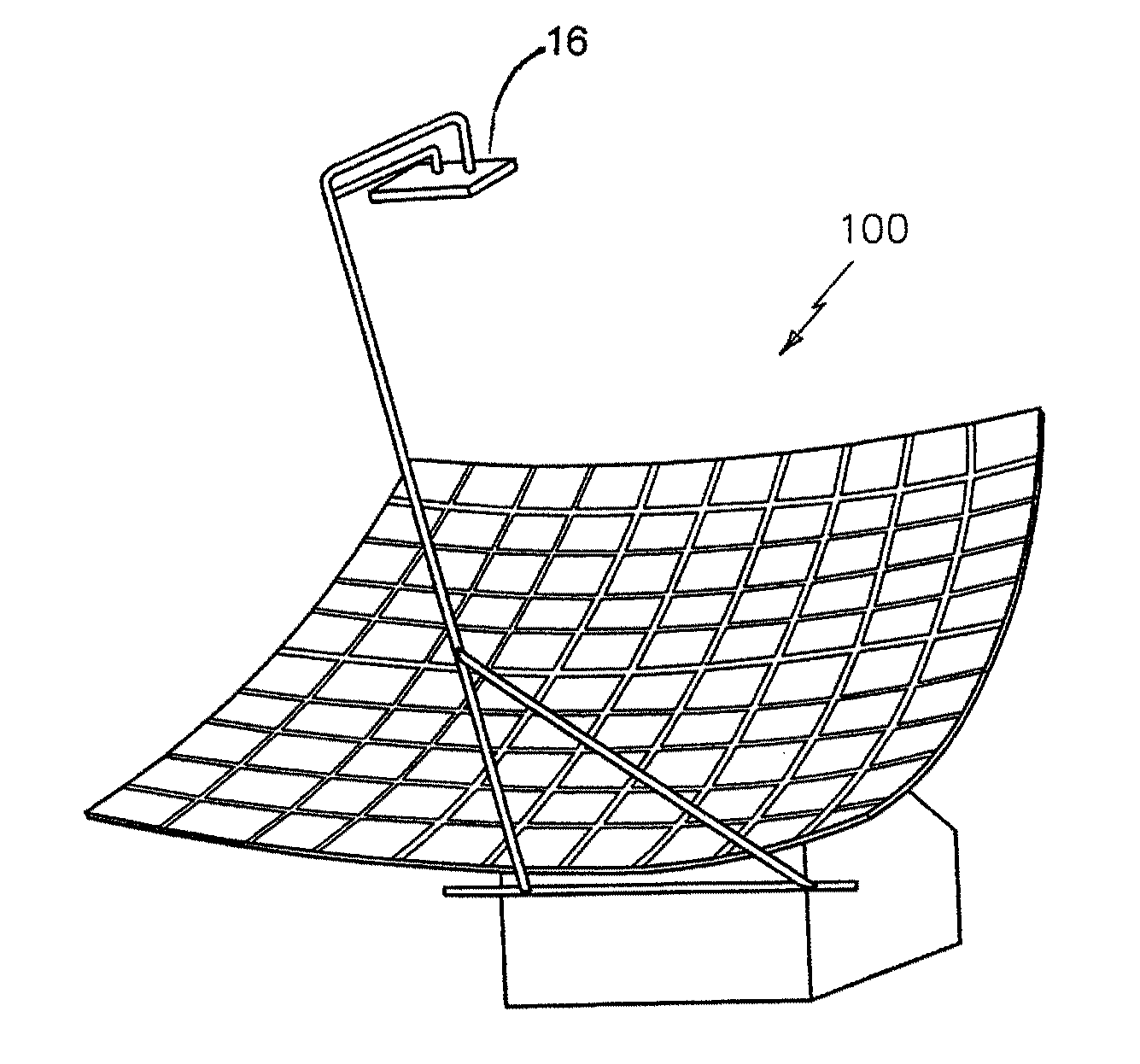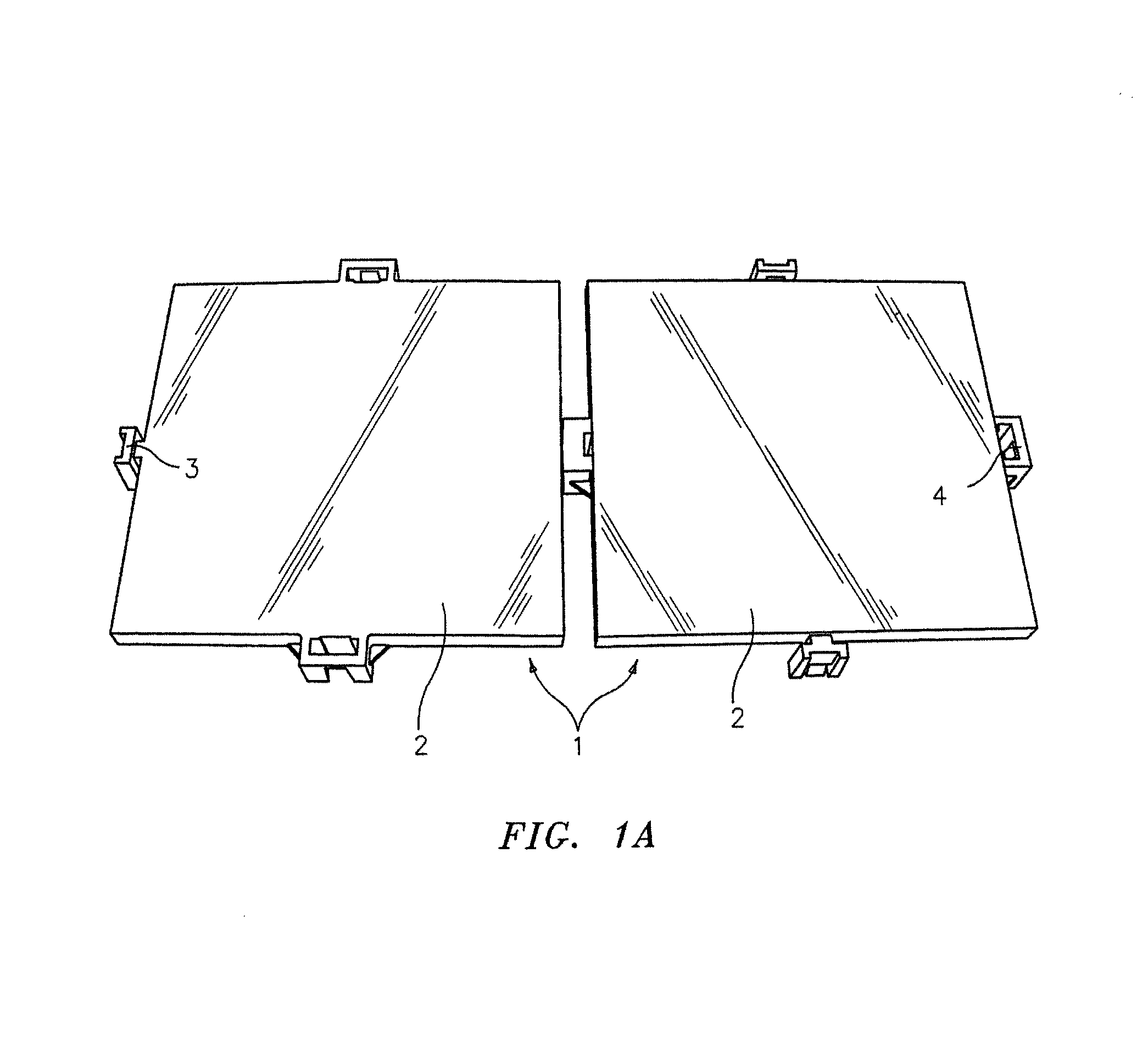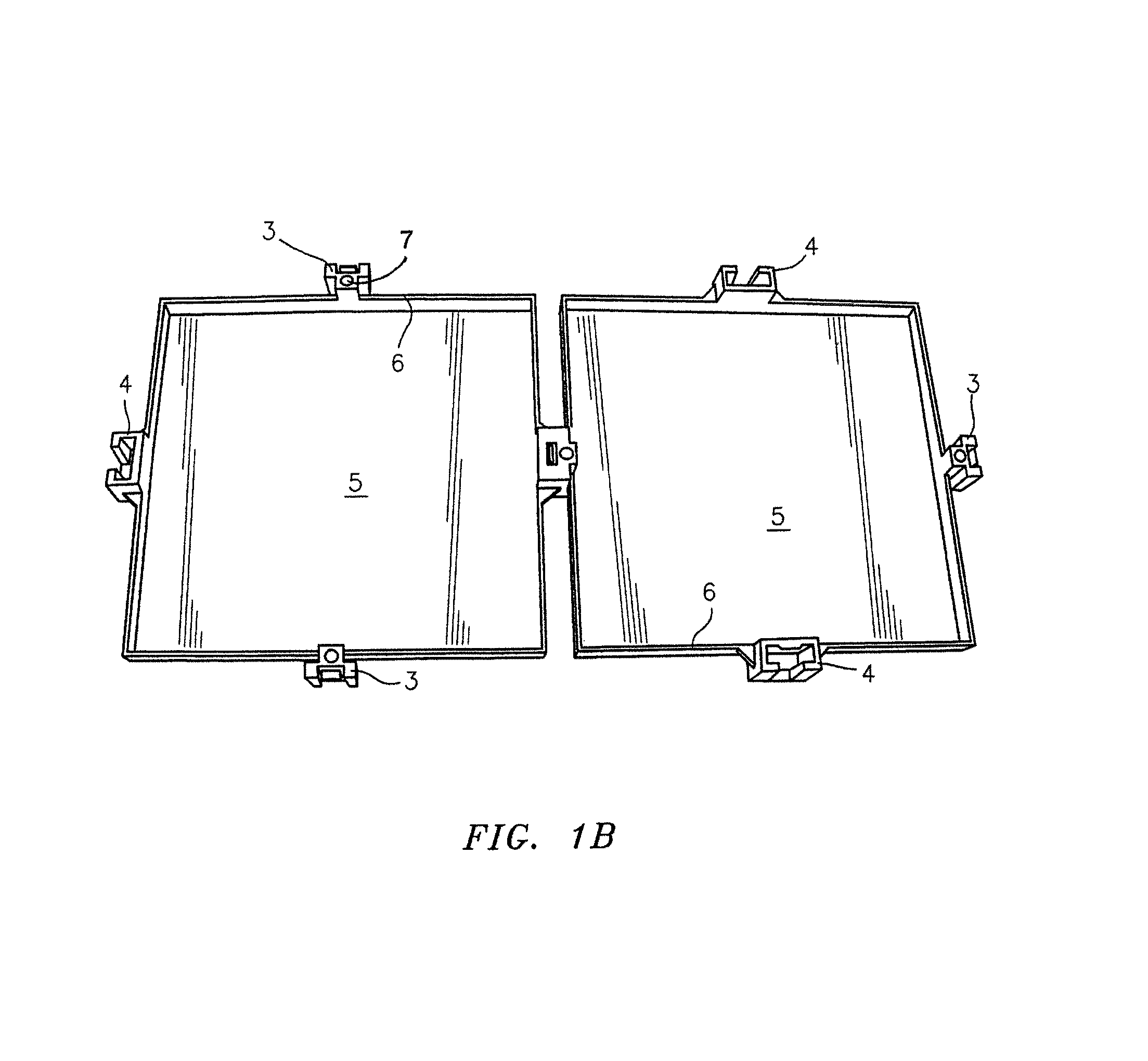Durable, lightweight, and efficient solar concentrator
a solar concentrator and solar energy technology, applied in the direction of heat collector mounting/support, pv power plants, lighting and heating apparatus, etc., can solve the problems of low maximum solar concentration, high cost of tall towers, stringent mirror contour requirements, etc., and achieve the effect of maximizing efficiency and maximizing the intensity of solar radiation inciden
- Summary
- Abstract
- Description
- Claims
- Application Information
AI Technical Summary
Benefits of technology
Problems solved by technology
Method used
Image
Examples
Embodiment Construction
[0031]The above and other objectives of the invention will become more apparent from the following description and illustrative embodiments which are described in detail with reference to the accompanying drawings. Similar elements in each Figure are designated by like reference numbers and, hence, subsequent detailed descriptions thereof may be omitted for brevity.
[0032]The present invention relates generally to an improved solar concentrator, as presented in FIG. 5 (100). Incident radiation is reflected from a plurality of surfaces and concentrated upon a predetermined region where it is converted into a usable form of energy. As previously indicated, conventional solar concentrators suffer from a number of drawbacks arising primarily from their complexity and cost. The present invention is based on the discovery that many of these issues may be addressed by arranging a plurality of reflective panel front surfaces into a periodic arrangement having an overall shape analogous to a ...
PUM
 Login to View More
Login to View More Abstract
Description
Claims
Application Information
 Login to View More
Login to View More - R&D
- Intellectual Property
- Life Sciences
- Materials
- Tech Scout
- Unparalleled Data Quality
- Higher Quality Content
- 60% Fewer Hallucinations
Browse by: Latest US Patents, China's latest patents, Technical Efficacy Thesaurus, Application Domain, Technology Topic, Popular Technical Reports.
© 2025 PatSnap. All rights reserved.Legal|Privacy policy|Modern Slavery Act Transparency Statement|Sitemap|About US| Contact US: help@patsnap.com



